Background:
The APR open PEX intake is advertised as “the best dollar-per-horsepower intake system for the 1.8T/2.0T engine!” Several desirable attributes are stated by the manufacturer as being provided by this intake.
APR does not provide a comparison of their intake against any competitor, creating a question about how this $190 intake compares with other options.
Note that the intake is comprised of the parts shown above; there is an intake pipe that is sized to fit into the stock accordion hose, an air filter, and enclosure. When estimating dollars-per-horsepower the components needed to support this part will factor into that equation. This will be addressed in the test results.
To assess where the APR PEX intake fits in with some other intake options I assembled various intake parts to support a session of mix-and-match flow testing.
Test Procedure:
This test is being conducted using a PTS Flow Bench. The intake parts will be attached to the bench using an adapter that simulates the compressor cover of the IS20 and IS38 turbochargers.
The flow bench is first tested with a calibration plate to verify the accuracy of the measured airflow. All tests are performed at a test depression of 28″ of H2O.
Because several combinations were tested the description for each setup tested will be provided along with the results.
Test Results:
The first configuration to be tested is made up of stock parts. This includes:
- Stock airbox
- Airbox grate
- Stock air filter
- Stock accordion hose
- Stock turbo inlet elbow
- Stock intake duct with driver side opened and rear passenger side to engine compartment covered
The stock setup with “free” upgrade of the opening of the front of the duct flows 340 CFM. This sets a baseline for comparison with purchased upgrades.
The first upgrade using replacement parts is the APR intake. As delivered the APR PEX intake replaces the stock airbox.
With the APR PEX intake the system airflow increases to 362 CFM. This is shown on the chart:
The stock turbo inlet elbow is a significant source of pressure drop through the intake. This stock part is replaced with a generic aftermarket (AM) turbo inlet elbow that I have previously evaluated to have “average” performance.
Note: The prices for an aftermarket Mk7 turbo inlet elbow can range from approximately $70-$200. APR sells their own turbo inlet elbow upgrade for $167. This improvement to overall system performance will also increase the dollar-per-horsepower ratio.
Replacement of the turbo inlet elbow results in an additional increase in airflow, now 377 CFM.
The stock accordion hose is another part that can be improved upon with the use of an aftermarket inlet hose. In this case the stock accordion hose is replaced with the APR Carbon Fiber inlet pipe. APR sells this upgrade part for $178.
System airflow increases slightly with the replacement inlet hose, up to 381 CFM.
An alternative low cost intake upgrade that was recently flow tested is the 034 Motorsport insuction bundle. This bundle includes a collection of parts that work with the stock airbox.
The 034 Motorsport insuction bundle flows 383 CFM.
Another configuration that was tried combines the APR PEX intake with the MST silicone hose and turbo inlet elbow. The MST inlet elbow is slightly higher flowing than the generic version.
Airflow through this combination is 387 CFM.
Another mixing of kits is tested pairing the APR intake with the inlet hose and TIP from the 034 insuction bundle. The 034 bundle also includes a panel filter for use with the stock airbox, but that filter is not needed in this pairing.
This combination flowed a couple more CFM than the APR / MST pairing, up to 392 CFM.
Conclusions:
The APR PEX open intake when paired with a good flowing inlet hose and turbo inlet elbow compares very well with other aftermarket intake options. The APR intake achieved 392 CFM when paired with a 034 inlet hose and turbo inlet elbow.
When the intake was tested as delivered and paired with standard Mk7 GTI intake parts the APR PEX intake flows 362 CFM. This combination is not shown on the summary chart. This flow rate exceeds that of the completely stock GTI intake and USP intake.
The addition of an aftermarket inlet hose ($178 from APR) and turbo inlet elbow ($167 from APR) improve flow performance, but also the overall cost to a total of $535.
If less expensive parts such as those in the $205 034 Motorsport Insuction Bundle were utilized, the cost would exceed that of the 034 Kit, while flow performance is nearly the same.
Note: The APR turbo inlet elbow was not used in this test, previously it has been tested and measured airflow is less than the generic TIP used in this testing. For this reason it is assumed that if the APR intake had been tested using the APR turbo inlet elbow the airflow would have been slightly less, making it nearly the same airflow as the 034 setup results above.
The affect of having an open versus closed intake was not the subject of this test, it has been evaluated previously and shown to have a negative affect on the work required from the turbocharger turbine.
The claim that the APR PEX intake is “the best dollar-per-horsepower intake system for the 1.8T/2.0T engine!” is not supported by these test results. The purchase of additional aftermarket parts is necessary to obtain top performance from the APR intake system and these added costs substantially alter the cost/performance ratio.



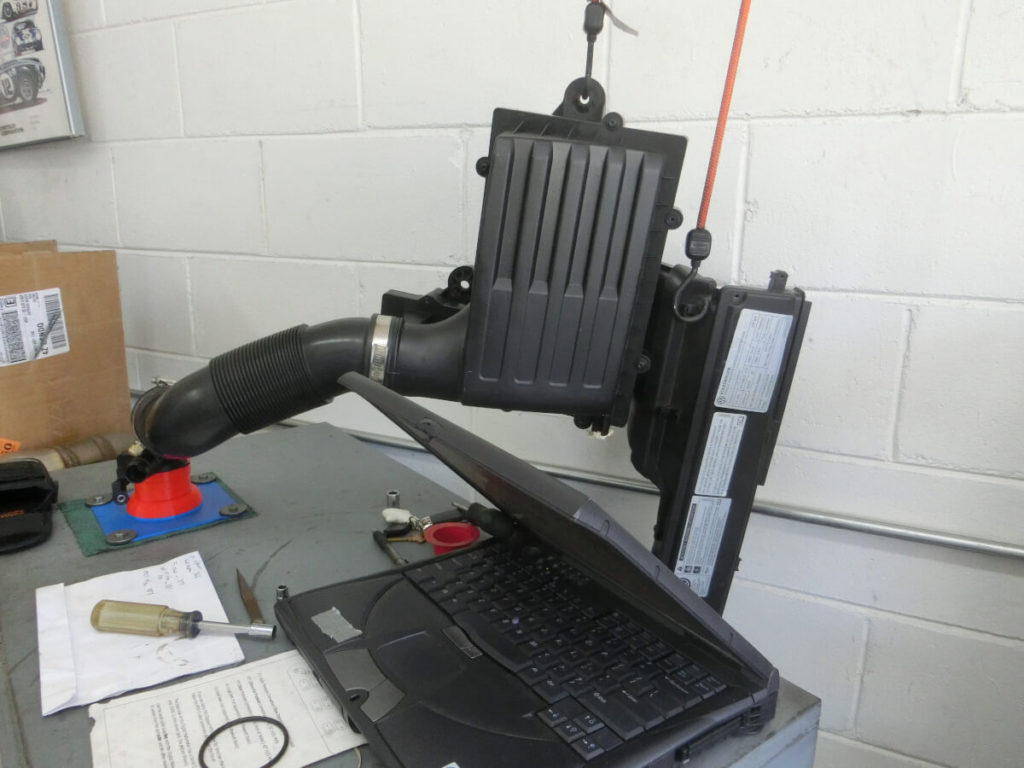

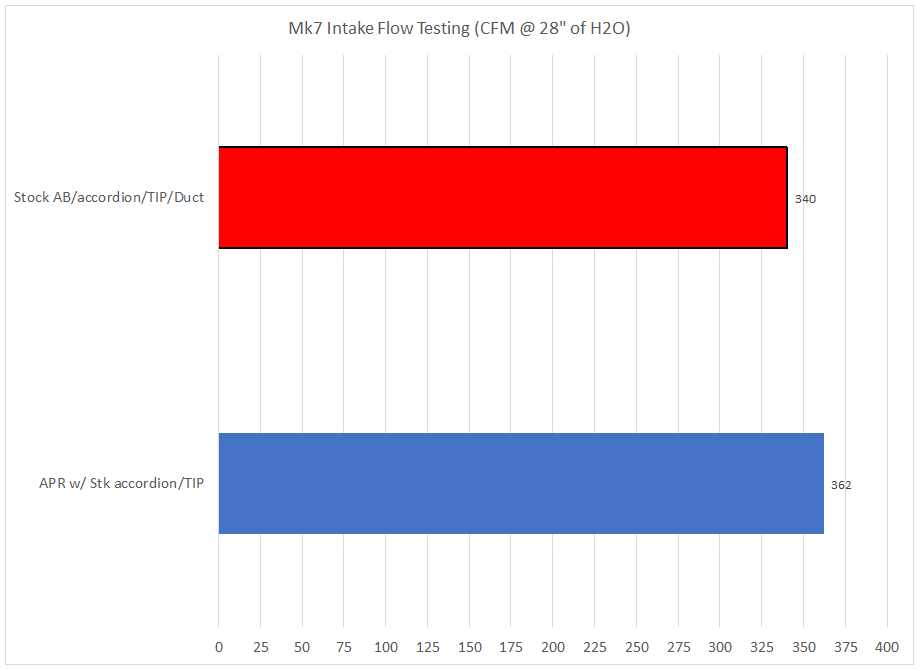
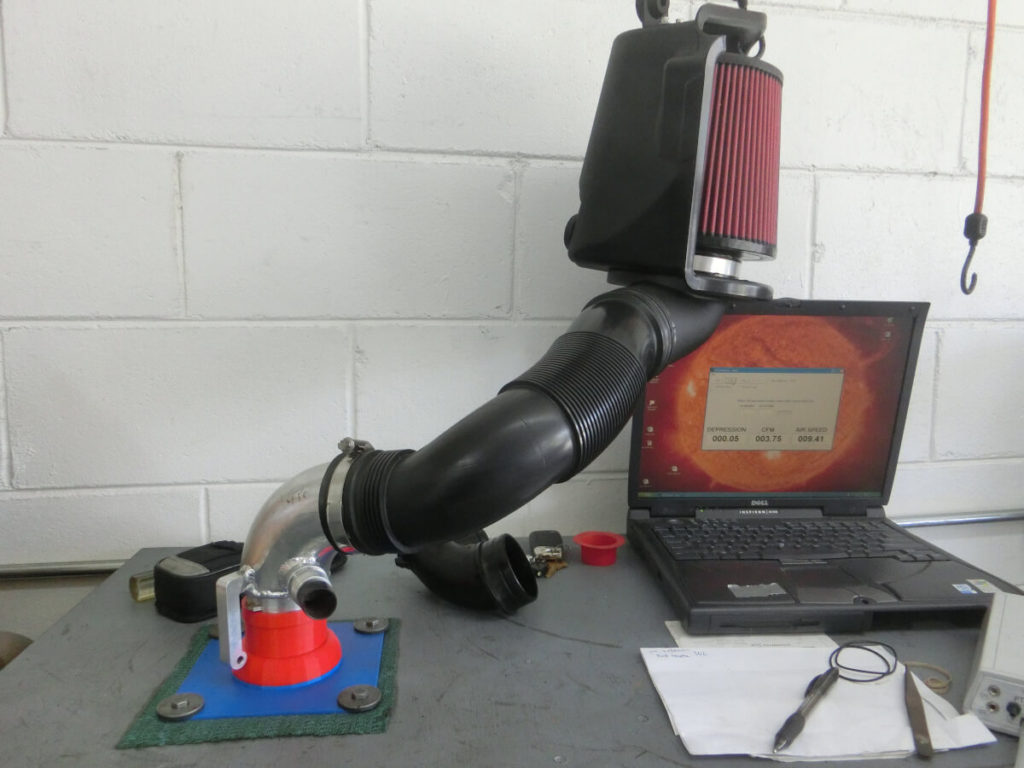





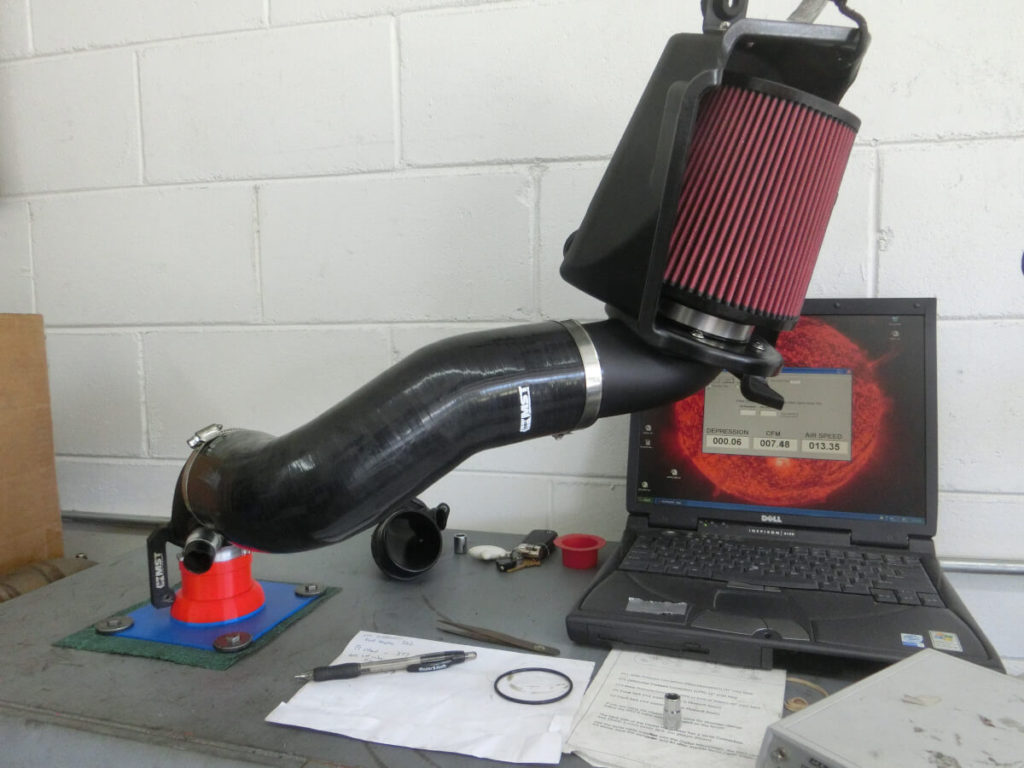


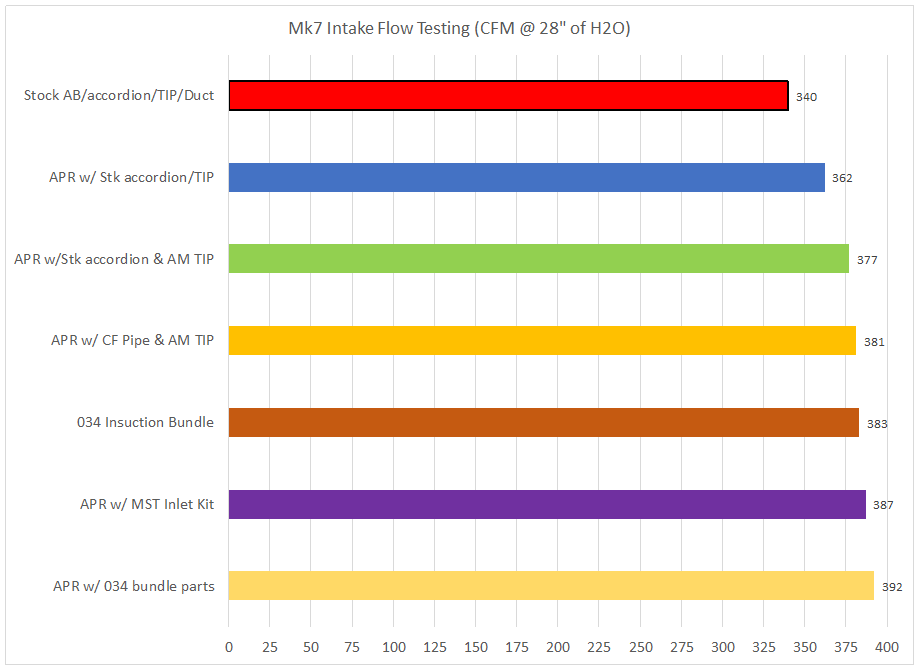

Thanks for the review I certainly have my eye on this product! My situation is I have a TIP and inlet hose already, so this will be more of a lateral move with some potential small increase in airflow vs modified stock airbox, but with more noise as I’ve decided I want to give that a try. This is an upgrade path for me that once I consider my sunk costs is cheaper than replacing parts I already have.
Hi Jeff, just curious if your PEX intake had a very loose intake manifold hose grommet on the underside of the piping and if you’d think that would cause unfiltered air to leak in or possible turbulence? Thanks!
Hey Nick, yes that connection for the hose is a bit loose. I doubt it allows enough air past (if any) to cause a turbulence issue. If I were planning to use the intake long term I’d probably look into securing it better just for peace of mind.
Hey Jeff! Just curious why APR is claiming different numbers than what you are reading. They claim I believe 833CFM on this new PEX intake, however your CFM numbers are significantly lower. Just curious what I’m missing! Love your work btw keep it up..
Trent
Thanks for the feedback, Trent!
I’ll have to guess since APR doesn’t provide any details about how they conducted their test. I think when they refer to testing the intake they are only testing the intake. The part that they show pictures of is attached directly to their flow bench. They are not including a turbo inlet hose, turbo inlet elbow, and the fixture they use to connect the intake to the flow bench is minimally restrictive.
I did some testing with the stock airbox that was similar to that method, and the results were close to what APR reports for the OEM airbox, so I’m reasonably confident what I have described is how they conducted their test of the PEX intake to get the numbers you quoted.
I’ve settled on most often testing intakes connected to an inlet hose and an inlet elbow as well as using an adapter that closely resembles the turbo compressor inlet. This gives me a better idea of how these parts are going to perform under typical operating conditions.
If I had tested the APR intake without the other intake parts and a different adapter the airflow would have been substantially higher.